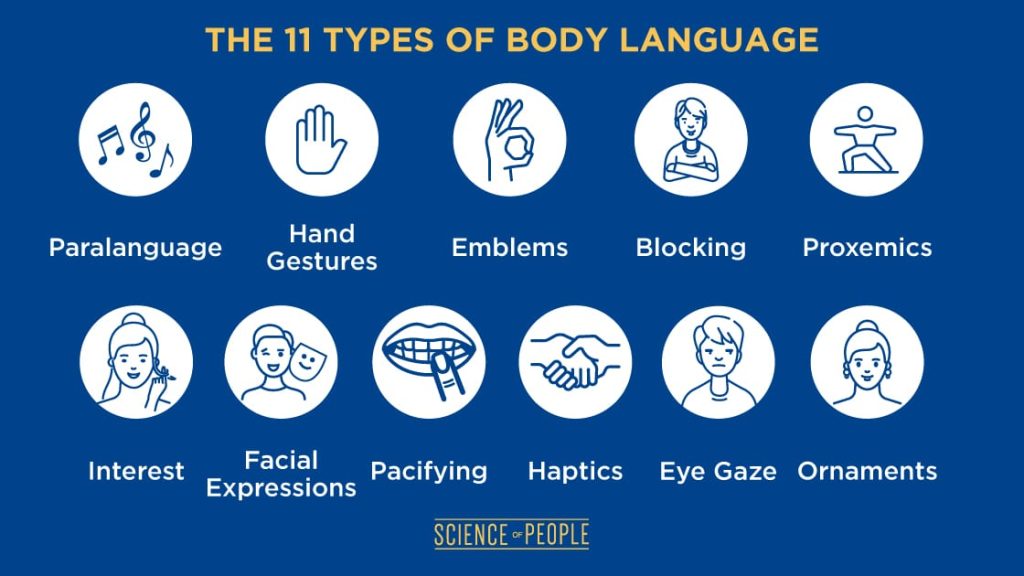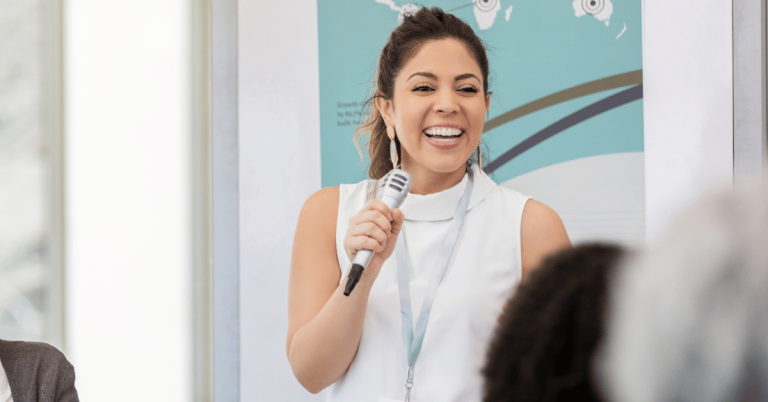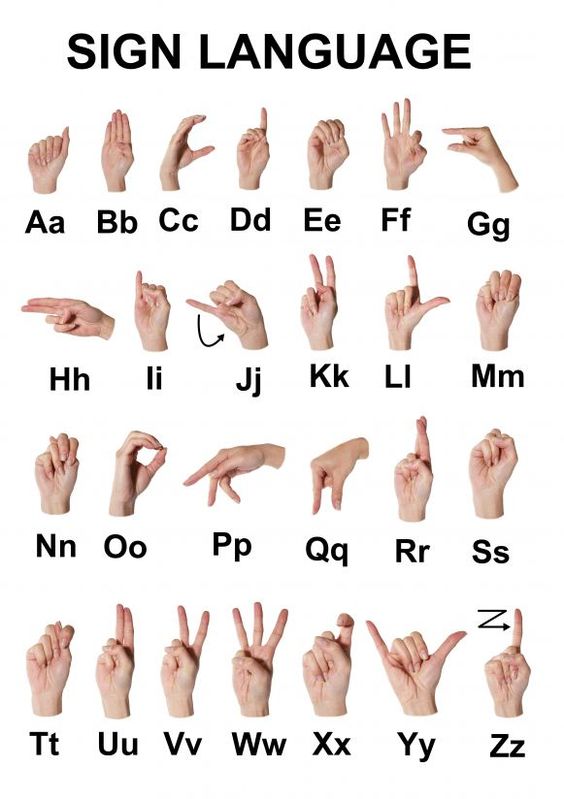The Science Of Body Language
Welcome to the intriguing world of body language, where every movement tells a story. In this article, we’ll explore the fascinating science of body language and how it can reveal a whole new level of understanding in our interactions with others. So, let’s dive in and uncover the secrets hidden within our gestures, postures, and expressions!
Have you ever wondered why a simple smile can brighten someone’s day? Or how crossed arms can convey defensiveness? Well, that’s the power of body language! It’s a silent language we all speak, even without uttering a word. And believe it or not, there’s a whole science behind it, dedicated to deciphering the messages conveyed through our physical cues.
By studying body language, we can gain valuable insights into people’s thoughts, emotions, and intentions. From a firm handshake to a subtle nod, every movement sends a signal that can shape our understanding of a conversation. Understanding the science behind body language can not only enhance our communication skills but also help us decode the unspoken messages we encounter in our daily lives.
So, get ready to embark on an exciting journey into the intricacies of the science of body language. We’ll delve into the nuances of eye contact, hand gestures, and even the subtlest facial expressions. By the end of this article, you’ll be equipped with powerful insights to navigate the world of nonverbal communication like a pro. Let’s start unraveling the mysteries and discovering the hidden power of body language!

The Science of Body Language: Decoding Non-Verbal Communication
Welcome to this in-depth exploration of the science of body language. In this article, we will delve into the fascinating realm of non-verbal communication, uncovering the secrets behind facial expressions, hand gestures, and body movements. Whether you’re interested in improving your interpersonal skills, understanding others better, or simply gaining insight into the intricacies of human behavior, this article will provide you with valuable knowledge and practical tips. So, let’s dive in and unlock the hidden language of the body!
The Importance of Body Language in Communication
Body language is a crucial aspect of communication. In fact, studies show that it accounts for the majority of our social interaction. While words convey explicit meanings, our body movements, expressions, and postures communicate subtle messages that can either enhance or contradict what we say verbally. Understanding body language can help us navigate social situations more effectively, establish rapport, and accurately interpret others’ intentions and emotions.
The Power of Facial Expressions
Our faces are incredibly expressive, capable of conveying a wide range of emotions without uttering a single word. From a smile that signals friendliness and approachability to a furrowed brow indicative of concern or confusion, our facial expressions communicate volumes. The science behind facial expressions, known as “microexpressions,” explores the rapid and involuntary movements that flash across our faces, revealing our true feelings even when we attempt to mask them. These fleeting expressions can offer valuable insights into someone’s thoughts or intentions, allowing us to better understand their true emotions.
Additionally, eye contact plays a vital role in non-verbal communication. Maintaining appropriate eye contact during a conversation conveys attentiveness and interest, while avoiding eye contact may signal discomfort or dishonesty. To gain a better understanding of eye contact and other facial expressions, researchers have studied various cultural norms and differences, further highlighting the complexity of facial communication across different societies and contexts.
Mastering the art of interpreting facial expressions takes practice, but it can greatly enhance your ability to connect with others on a deeper level. By paying attention to the subtle cues on someone’s face, you can not only improve your interpersonal skills but also build stronger relationships based on genuine empathy and understanding.
The Language of Body Movements and Gestures
Have you ever noticed how someone’s stance or posture can convey confidence or insecurity? The way we carry ourselves physically sends powerful messages about our inner state. From the way we stand to how we use our hands while speaking, body movements and gestures play a significant role in non-verbal communication.
For example, an open and relaxed posture with uncrossed arms can signal approachability and receptiveness. Conversely, crossed arms and a closed-off stance suggest defensiveness or discomfort. Similarly, hand gestures can emphasize our words, add clarity to our message, and even reveal subconscious intentions. The study of body movements and gestures, known as “kinesics,” provides valuable insights into these non-verbal cues and how they influence the perception of our communication.
It’s important to note that body language is not a one-size-fits-all science. Cultural differences, individual preferences, and personal histories can all shape the way we express ourselves physically. Understanding the cultural context and adapting our own body language accordingly helps to foster effective cross-cultural communication and avoid misunderstandings.
Interpreting Body Language in Different Contexts
The interpretation of body language can vary depending on the context in which it is observed. Consider how the same gesture, such as a handshake, can convey different meanings in different situations. A firm handshake is often associated with confidence and assertiveness in business settings, while a gentle handshake may signify warmth and friendliness in social settings.
Emotions and Body Language
Our emotions have a profound impact on our body language, and vice versa. When we experience certain emotions, such as fear, anger, or happiness, our bodies respond in distinct ways. This reciprocal relationship is known as the “emotional feedback loop.” By being aware of our own body language and how it reflects our emotional state, we can gain greater control over our emotions and project the desired image to others.
Similarly, being attuned to the body language of others can offer valuable insights into their emotional experiences. For example, crossing one’s arms and avoiding eye contact may indicate defensiveness or discomfort, while relaxed and open postures often signify ease and comfort. By understanding these cues, we can adapt our communication approach and create a more supportive and empathetic environment.
In this fast-paced digital age, where much of our communication occurs online, the science of body language remains as relevant as ever. While non-verbal cues may be more subtle in virtual interactions, they still play a crucial role in understanding others and making meaningful connections. Whether face-to-face or screen-to-screen, recognizing and interpreting body language can lead to more authentic and effective communication experiences.
Practical Tips for Applying Body Language Skills
To enhance your body language skills and become a more effective communicator, here are some practical tips to keep in mind:
- Pay attention to your own body language. Be aware of your posture, facial expressions, and hand gestures.
- Practice active listening. Maintain eye contact, nod in agreement, and reflect the speaker’s emotions through your own non-verbal cues.
- Observe others’ body language. Pay attention to their facial expressions, stance, and gestures to gain insights into their thoughts and emotions.
- Consider cultural differences. Be mindful that body language can vary across cultures, so adapt your communication style accordingly.
- Practice empathy and understanding. Use your body language to convey genuine interest, respect, and empathy towards others.
- Seek feedback. Ask trusted friends or colleagues for feedback on your body language to identify areas for improvement.
- Continue learning. Explore books, courses, and workshops on body language to deepen your understanding and refine your skills.
Unveiling the Mysteries of the Science of Body Language
In conclusion, the science of body language offers a wealth of insights into the intricacies of human communication. By understanding and applying this knowledge, we can enhance our connections, establish rapport, and navigate social interactions with ease. From interpreting facial expressions to decoding body movements and gestures, the non-verbal language of the body continues to be a rich source of information. So, take the time to observe, practice, and refine your body language skills, and watch as your ability to connect with others reaches new heights.
The Science of Body Language
- Body language is a form of nonverbal communication.
- Facial expressions, gestures, and posture are key components of body language.
- Understanding body language can help in interpreting others’ emotions and intentions.
- Confidence can be conveyed through open and relaxed body language.
- Body language should be interpreted within the context of the situation and individual.
Frequently Asked Questions
Welcome to our FAQ section on the science of body language! Here, we’ll address common questions about how body language works and its impact on communication. Read on to discover the fascinating insights behind this nonverbal form of expression.
1. What is body language and why is it important?
Body language refers to the gestures, postures, facial expressions, and other nonverbal cues that convey messages without the use of words. It plays a crucial role in communication, as it can convey emotions, intentions, and attitudes in a powerful way. Understanding body language is important because it can help us interpret others’ feelings and intentions more accurately, leading to improved communication and stronger connections with others.
By studying body language, we can also become more aware of our own nonverbal cues and how they may impact our interactions with others. This awareness allows us to adjust our body language to communicate more effectively and build better relationships.
2. Can body language be controlled or altered?
While some aspects of body language are instinctive and difficult to control, many nonverbal cues can be consciously modified to some extent. For example, we can work on maintaining eye contact, using open and inviting postures, or mirroring the body language of the person we are communicating with. Practicing these conscious adjustments can enhance our ability to connect and communicate effectively.
It is worth noting that although we can make deliberate modifications to our body language, it is essential to ensure that these changes appear genuine and respectful. Forced or insincere body language can be easily detected and may hinder communication rather than facilitate it.
3. How does body language influence first impressions?
Body language has a significant impact on the formation of first impressions. Studies have found that within seconds of meeting someone, we evaluate their trustworthiness, confidence, and likability based on their nonverbal cues. Our posture, facial expressions, and gestures can either create a positive or negative impression.
Additionally, certain nonverbal behaviors can also influence perceptions of authority, dominance, and competence. Being aware of the messages we convey through body language can help us make more favorable first impressions and set the tone for successful interactions.
4. What are the key body language cues to look for?
Several body language cues can reveal important information about a person’s thoughts or emotions. These include facial expressions like smiling, frowning, or raised eyebrows; posture and body orientation, such as crossed arms or leaning in; hand gestures; and eye contact. Additionally, changes in tone of voice and overall body movements can also provide valuable insights into a person’s feelings or level of comfort.
However, it is important to remember that interpreting body language is not an exact science. Nonverbal cues can vary across individuals and cultures, making it essential to consider the context and cluster of signals before making conclusions.
5. Can body language be used to detect deception?
While body language can provide some clues, it is not always a reliable indicator of deception. Commonly believed cues, such as avoiding eye contact or fidgeting, can have various interpretations and may not always indicate dishonesty. Additionally, individuals who are skilled at deception can consciously control their body language to appear sincere.
It is crucial to avoid making snap judgments based solely on body language cues when it comes to detecting deception. Combining body language observations with other verbal and nonverbal cues, as well as considering the overall context, can help in making a more accurate assessment.

Summary
Understanding body language can help us communicate better and understand others more accurately. Body language is the way we use our bodies to express emotions and thoughts. By paying attention to someone’s facial expressions, gestures, and posture, we can get important clues about how they are feeling or what they mean. For example, crossed arms might mean someone is defensive or closed off, while a smile can indicate happiness or friendliness.
Body language is also important in our own communication. By being aware of our own body language, we can make sure we are sending the right message. Standing tall and making eye contact can show confidence, while fidgeting or avoiding eye contact can make us seem nervous or uninterested. It’s important to remember that body language is not always universal and can vary between cultures, so it’s important to be mindful of cultural differences. By paying attention to body language, we can improve our communication skills and better understand the people around us.

